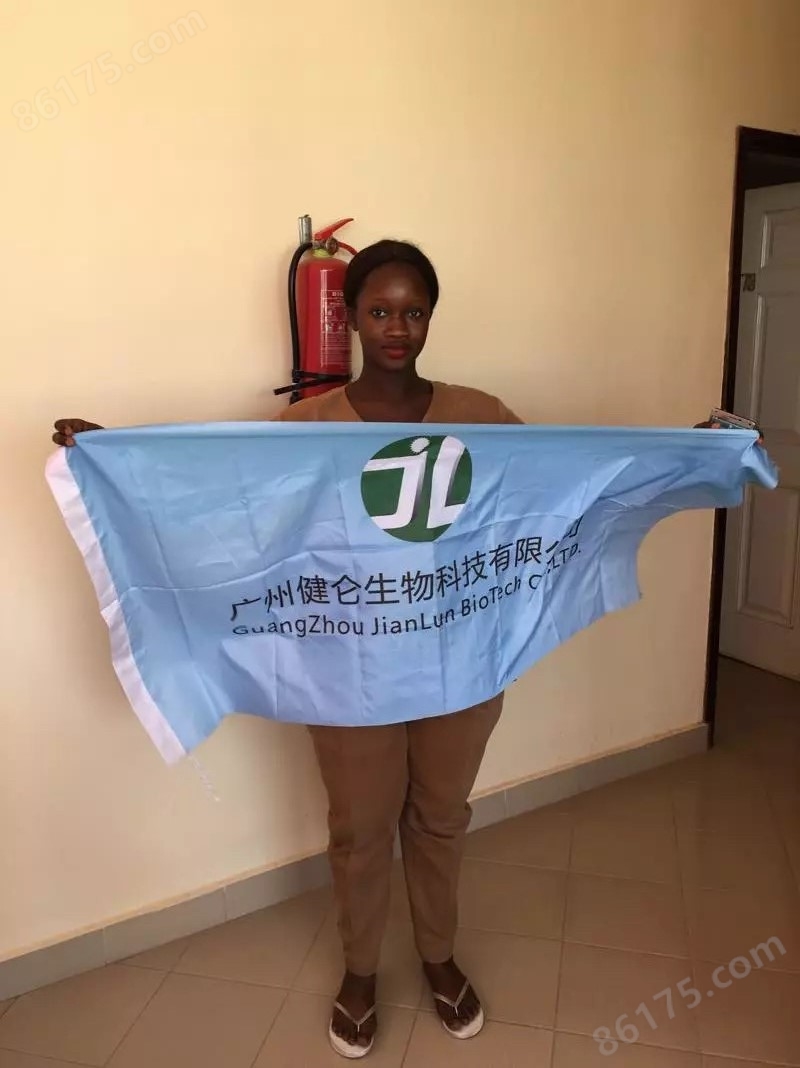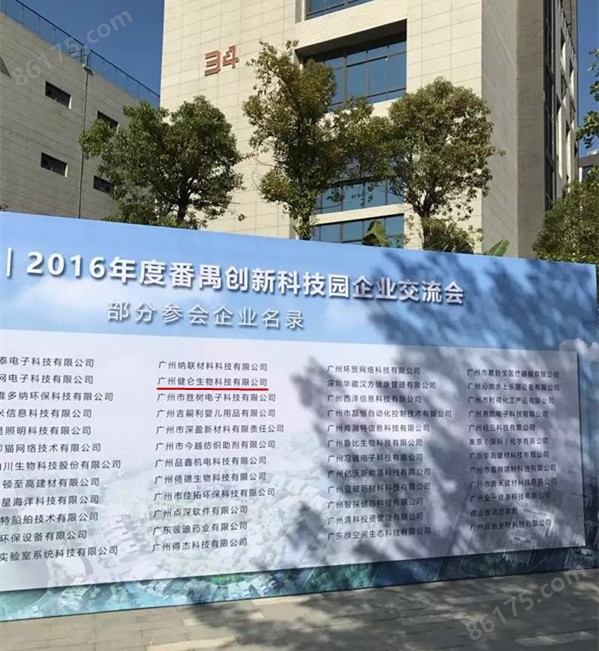其他品牌 品牌
代理商厂商性质
广州市所在地
Cellabs沙眼衣原体间接免疫荧光检测试剂
广州健仑生物科技有限公司
广州健仑长期供应各种生物原料,主要代理品牌:美国Seracare、西班牙Certest、美国Fuller、美国NOVABIOS、 Cellabs等等。
Cellabs公司是一个的生物技术公司,总部位于澳大利亚悉尼。专门研发与生产针对热带传染性疾病的免疫诊断试剂盒。其产品40多个国家和地区。1998年,Cellabs收购TropBio公司,进一步巩固其在研制热带传染病、寄生虫诊断试剂方面的位置。
Cellabs沙眼衣原体间接免疫荧光检测试剂
该公司的Crypto/Giardia Cel IFA是国标*推荐的两虫检测IFA染色试剂、Crypto Cel Antibody Reagent是UK DWI水质安全评估检测的*抗体。
主要产品包括:隐孢子虫诊断试剂,贾第虫诊断试剂,疟疾诊断试剂,衣原体检测试剂,丝虫诊断试剂,锥虫诊断试剂等。
广州健仑生物科技有限公司与cellabs达成代理协议,欢迎广大用户咨询订购。
我司还提供其它进口或国产试剂盒:登革热、疟疾、流感、A链球菌、合胞病毒、腮病毒、乙脑、寨卡、黄热病、基孔肯雅热、克锥虫病、违禁品滥用、肺炎球菌、军团菌、化妆品检测、食品安全检测等试剂盒以及日本生研细菌分型诊断血清、德国SiFin诊断血清、丹麦SSI诊断血清等产品。
欢迎咨询
欢迎咨询2042552662
【Seracare产品介绍】
货号 | 产品名称 | 产品描述 | 规格 | |
免疫荧光试剂盒(IFA kit) | ||||
KR1 | Crypto Cel | 隐孢子虫(Cryptosporidium)间接免疫荧光检测试剂 | 50 Test | |
KR2 | Crypto/Giardia Cel | 隐孢子虫&贾第虫(Cryptosporidium & Giardia)间接免疫荧光检测试剂 | 50 Test | |
KG1 | Giardia Cel | 贾第虫(Giardia)间接免疫荧光检测试剂 | 50 Test | |
KC1 | Chlamydia Cel | 沙眼衣原体(Chlamydia trachomatis)间接免疫荧光检测试剂 | 50 Test | |
KC2 | Chlamydia Cel LPS | 衣原体 lipopolysaccharide (LPS)间接免疫荧光检测试剂 | 50 Test | |
KC3 | Chlamydia Cel Pn | 肺炎衣原体(Chlamydia pneumoniae)间接免疫荧光检测试剂 | 50 Test | |
KP1 | Pneumo Cel | 卡氏肺孢子虫(Pneumocystis carinii)间接免疫荧光检测试剂 | 50 Test | |
KP2 | Pneumo Cel Indirect | 卡氏肺孢子虫( Pneumocystis carinii)间接免疫荧光检测试剂 | 50 Test | |
酶免试剂盒 ELISA kit | ||||
KG2 | Giardia CELISA | 贾第虫(Giardia)ELISA kit | 96 Test | |
KE1 | Entamoeba CELISA Path | 溶组织内阿米巴(Entamoeba histolytica) ELISA kit | 96 Test | |
KF1 & KF2 | Filariasis CELISA | 班氏丝虫(Wuchereria bancrofti ) ELISA kit |
| |
KM2 | Malaria Antigen (HRP2) CELISA | 恶性疟原虫(Plasmodium falciparum) 抗原 ELISA kit | 192 Test | |
KMC3 | Pan Malaria Antibody CELISA | 间日、三日、恶性及卵形疟疾(Malaria)ELISA IgG kit | 192 Test | |
KT2 | T. cruzi IgG CELISA | 克氏锥虫(Trypanosoma cruzi) ELISA IgG kit | 192 Test | |
KT3 | Toxocara IgG CELISA | 弓首线虫(Toxocara canis) ELISA IgG kit | 192 Test | |
KF3 | Filariasis Ab (Bm14) CELISA | 淋巴丝虫病(lymphatic filariasis) ELISA IgG kit | 480 Test | |
KM7 | Quantimal™ pLDH Malaria CELISA | 疟疾pLDH抗体检测 ELISA kit | 96 Test | |
二维码扫一扫
【公司名称】 广州健仑生物科技有限公司
【】 杨永汉
【】
【腾讯 】 2042552662
【公司地址】 广州清华科技园创新基地番禺石楼镇创启路63号二期2幢101-3室
【企业文化】



北温带终年受极地气团影响,虽然冬季表层水温较低,但盐度小,含氧量 多,水团垂直交换强,水中营养盐类丰富,浮游生物很多,故使大量以浮游生物为饵料的鱼类得到繁殖、 生长,成为世界重要渔场的分布区域。北温带鱼类的种数远比北极带丰富,主要有太平洋鳕鱼、鲱鱼、大马哈鱼等,它在世界渔业经济中具有重要地位。哺乳动物中,在太平洋部分有海狗、海驴、海獭、日本鲸和海豚;在大西洋水域有比斯开鲸、白海海豚、海豹等。
(3)北热带。大体位于北纬10~30°。全年气温均较高,冬、夏季温差不大(zui 热月平均温22~25℃,zui冷月15~20℃)。多热带气旋。年降水量500~1000毫米。带内东西部海区气温 、降水差异明显。全年受副热带高压带控制,广大海域水体垂直交换微弱,深层水的营养盐类不易上涌 ,浮游生物和有经济价值的鱼类都较少。但是,在受赤道洋流影响的海域,含有丰富营养盐类的深层水上涌,使浮游生物和鱼类得以繁殖,形成有价值的鱼类捕捞区。哺乳类动物很少,主 要有抹香鲸。本带北部繁殖有多种浮游动物,南部有大量的珊瑚、海龟和鲨等。
(4)赤道带。大体介于南北纬10°间。终年高温多雨,年均温25~28℃,年降水 量1500~2000米,赤道附近可达2000~3000毫米。处在赤道低压区,全年气温高、风力微弱、蒸发旺盛 ,加之有赤道洋流引起海水的垂直交换,使下层营养盐类上升,生物养料比较丰富,鱼类较多,主要有 鲨、鱏等,飞鱼为赤道带典型鱼 类。
(5)南热带。位于南纬10~30°。本带由于高压特别强盛,致使热带位置向北推 移,其它特征和成因均与北热带基本相同,亦属少生物型。
(6)南温带。大体介于南纬30~60°。全年盛行西风,其中南纬40~60°洋面上 ,因三大洋相互连
世界陆地自然带的分布
世界陆地自然带的分布
通,风力很强,素有“咆哮西风带”之称。热量、降水状况类似北温带。海洋生物的 发育和生长条件与北温带相似。海生植物繁茂,巨型藻类生长* ,浮游生物丰富,是南半球海洋动物zui多的地带。
The northern temperate zone is affected by the polar air mass all the year round. Although the surface water temperature is low in winter, the salinity is small, the oxygen content is high, the water mass is vertically exchanged, the nutrients in the water are abundant, and plankton is abundant, so a lot of plankton are used as bait. The fish are breeding and growing and become the distribution area of the world's important fishing grounds. The number of species of northern temperate fish is much richer than that of the Arctic, mainly including Pacific salmon, squid and salmon. It has an important position in the world's fisheries economy. Among mammals, there are seals, sea lions, sea otters, Japanese whale and dolphins in the Pacific Ocean, and Biscay whale, White Sea dolphins and seals in the Atlantic waters.
(3) North Tropics. It is roughly 10 to 30 degrees north latitude. The temperature throughout the year is relatively high, and the temperature difference between winter and summer is not significant (the average temperature of the hottest month is 22 to 25°C, and that of the coldest month is 15 to 20°C). Many tropical cyclones. The annual precipitation is 500 to 1000 mm. There is a significant difference in temperature and precipitation between the eastern and western parts of the zone. It is controlled by the subtropical high pressure zone throughout the year. The vertical exchange of water in the vast sea areas is weak, and the nutrients in deep water are not easy to ascend. There are fewer plankton and economically valuable fish. However, in the waters affected by the equatorial currents, deep waters that are rich in nutrients will allow plankton and fish to multiply and form valuable fish harvesting areas. There are very few mammals, mainly sperm whales. There are many species of zooplankton in the north of the belt, and there are plenty of corals, turtles and sharks in the south.
(4) Equatorial belt. It is roughly between 10 degrees north and south latitude. It is hot and rainy all year round, with an average annual temperature of 25 to 28°C, an annual rainfall of 1,500 to 2,000 meters, and an equator of 2,000 to 3,000 millimeters. It is located in the equatorial low-pressure area and enjoys high temperatures, weak winds, and strong evaporation. In addition, the vertical exchange of seawater caused by the equatorial ocean currents increases the nutrient levels in the lower layers. The abundance of biological nutrients and fish are abundant. Sharks, cockroaches, etc. Flying fish are typical fish in the equator.
(5) South Tropics. Located 10 to 30 degrees south latitude. Because of the high pressure, this zone has caused the tropical location to move northwards. Other characteristics and causes are basically the same as in the northern tropical zone, and it is also a less biological type.
(6) South Temperate Zone. It is roughly between 30 and 60 degrees south latitude. The prevailing westerly winds throughout the year, including 40° to 60°S latitude, are connected by the three oceans.
Distribution of natural terrestrial belts in the world
Distribution of natural terrestrial belts in the world
Tong, strong wind, known as "roaring Westwind". The heat and precipitation conditions are similar to the north temperate zone. The development and growth conditions of marine life are similar to those in the north temperate zone. Marine plants are abundant, giant algae grow extremely well, plankton is abundant, and it is the most marine animal in the southern hemisphere.